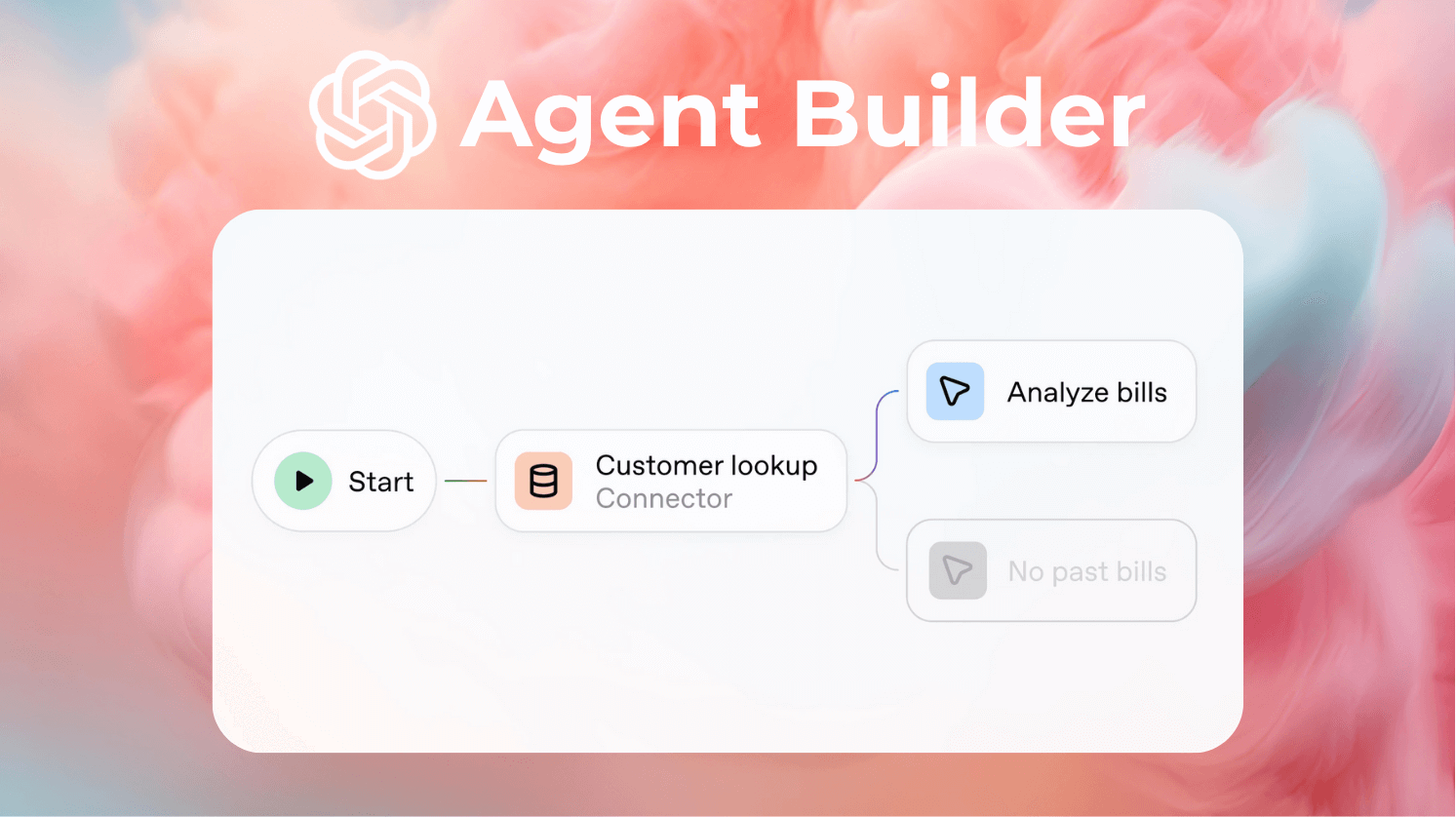At OpenAI’s Dev Day, one announcement generated a wave of excitement: Agent Builder. A new visual tool designed to simplify the creation of AI agents and workflows inside ChatGPT.
Immediately, the industry response followed a familiar arc: bold claims, Twitter hot takes, and predictions that this would be the end of traditional automation platforms like Zapier, Make, and n8n.
But as with most big innovations, the real story is a little more nuanced.
Agent Builder is a meaningful step forward in OpenAI’s product strategy. It offers powerful new capabilities that will impact how teams create and deploy agentic workflows. However, it’s not yet a full replacement for enterprise-grade automation platforms.
Here’s a breakdown of what Agent Builder is, what it solves, and where it still has room to grow.
What Is Agent Builder?
Agent Builder is a visual canvas that lets you create, version, and manage multi-step workflows powered by OpenAI’s models inside ChatGPT. You no longer have to rely on long prompt chains or hidden tools running behind the scenes.
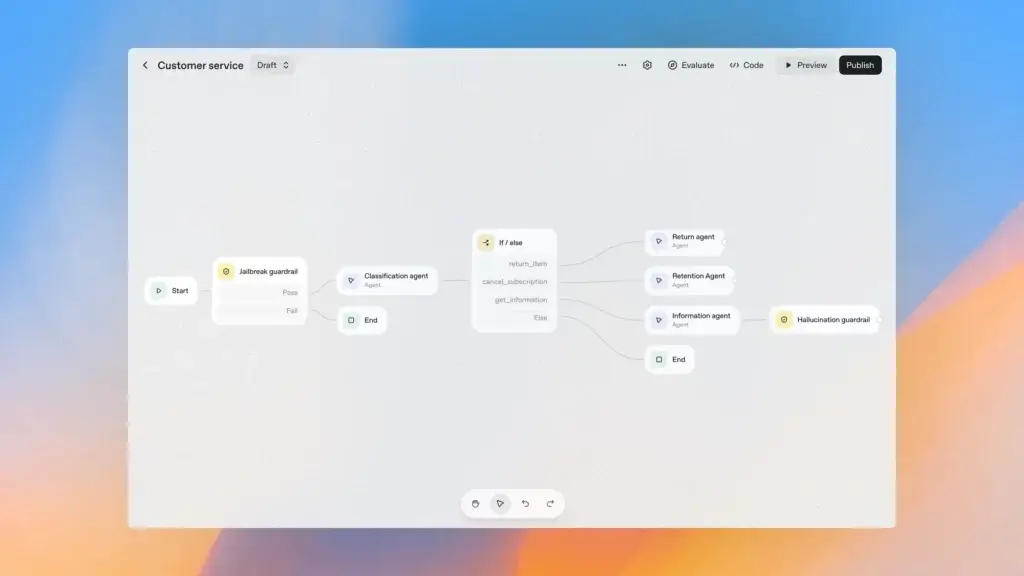
Instead, you can:
- Drag and drop logic blocks and agent actions
- Define guardrails and conditional flows
- Preview and test interactions
- Deploy and version your agents all in one place
This rollout is part of a larger product expansion that also includes:
- Connector Registry: A centralized hub for managing integrations with apps like Google Drive, SharePoint, and Microsoft Teams
- ChatKit: A toolkit for embedding agents inside web and mobile products
- Enhanced Evals: A new suite of tools to test and optimize prompt performance
- Multi-agent support: The ability to build structured workflows with multiple connected agents
For developers and teams working inside the OpenAI ecosystem, these updates are a significant step forward.
Why This Generated So Much Hype
For years, building AI agents has been a complex and fragmented process. Teams often had to juggle between different tools, APIs, and prompt configurations to achieve anything remotely scalable.
Agent Builder helps remove many of those roadblocks.
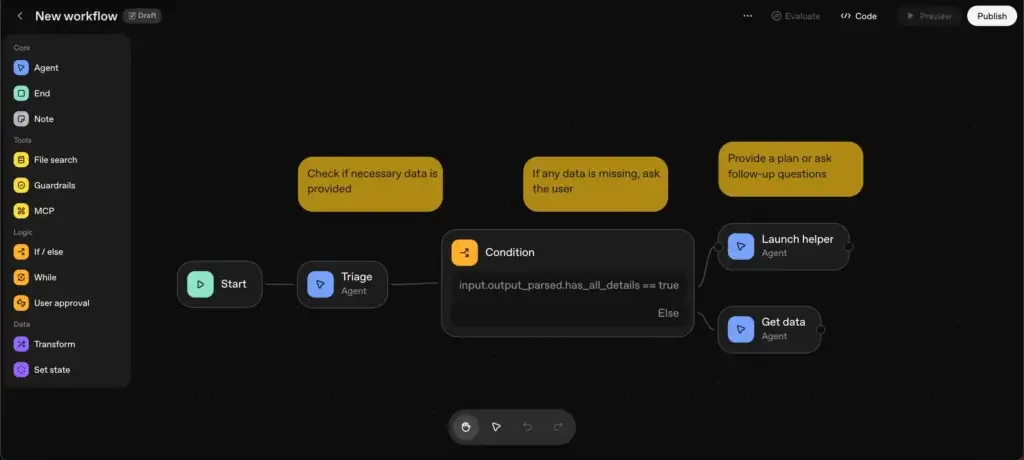
The addition of a visual interface is especially important. It gives product, marketing, and design teams a way to contribute to AI workflow design without writing code. It also enables faster testing, iteration, and collaboration between technical and non-technical stakeholders.
Companies like Ramp, Canva, Figma, Zapier, and Hubspot have already used it to ship internal agents in a matter of hours.
Where It Delivers
Agent Builder introduces some exciting capabilities, particularly if you are already building inside the OpenAI ecosystem. A few standout features include:
- Rapid Iteration: You can prototype and test agent flows quickly without switching between tools or writing full applications.
- Connector Registry: A centralized place to manage your integrations with services like Google Drive, SharePoint, Dropbox, and Microsoft Teams. This helps consolidate data pipelines across teams and platforms.
- Guardrails: Built-in safety controls help flag or block unsafe or unintended behavior. These tools provide essential guardrails for data handling, user safety, and prompt injection risks.
- Multi-Agent Workflow Design: Teams can now design agent flows that coordinate across multiple agents in a shared pipeline. This opens the door for use cases like customer service flows, AI research assistants, and sales enablement agents.
- Support for MCP (Model Customization Protocol): Through OpenAI’s MCP framework, Agent Builder supports deeper integrations with third-party tools like Figma and Notion. This means your agents can take action based on real-time changes in external platforms, enabling more dynamic and connected experiences.
- Evaluation Tools: Evals now include dataset creation, trace grading, automated prompt optimization, and third-party model support. These tools help teams monitor performance and iterate on agent behavior with confidence.
Together, these features make Agent Builder a strong choice for teams exploring internal tools, low-risk automations, or embedded AI experiences inside their existing products.
Where It Still Falls Short
While Agent Builder shows real potential, it still lacks several features that automation teams rely on for production-level stability and control.
1. Limited Workflow Control
Platforms like Zapier, Make, and n8n offer detailed control over how automations run. This includes:
- Branching logic
- Timeout and retry settings
- Environment variables
- Community Nodes
- Execution history and failover mechanisms
Agent Builder relies on the reasoning of the language model, which introduces variability. That may be acceptable for creative or low-risk workflows, but it introduces risk for mission-critical systems.
2. No Model Flexibility
Tools like n8n allow teams to integrate models from OpenAI, Anthropic, and other providers. Some companies even run models on private infrastructure.
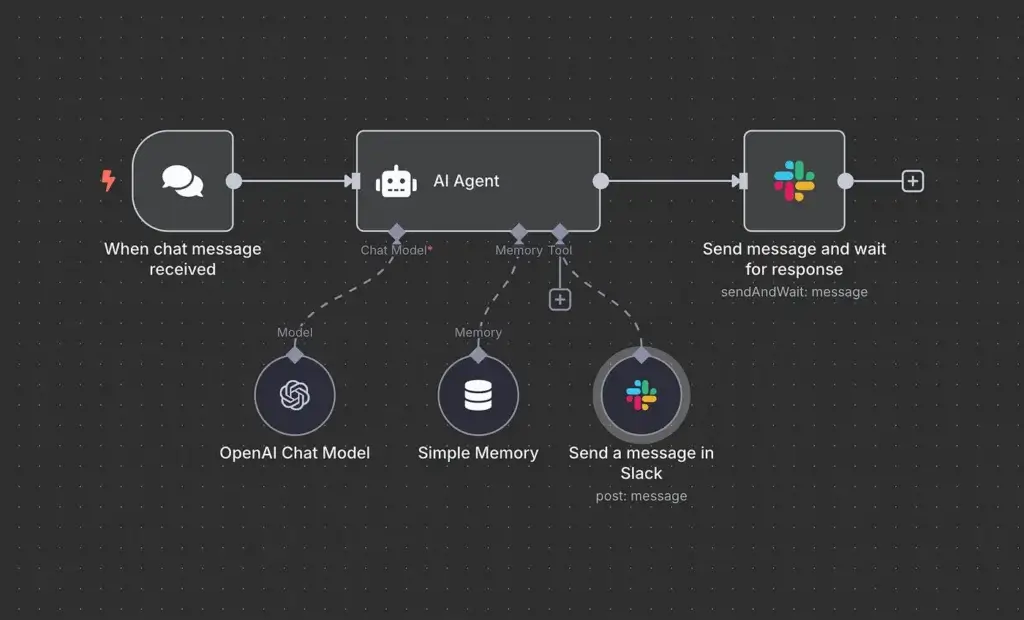
Agent Builder is currently tied to OpenAI’s platform. If you are building with a multi-model strategy or require vendor flexibility, this may limit your adoption.
3. Operational Maturity
Zapier, n8n and Make have had years to build the surrounding infrastructure needed for enterprise deployments. That includes:
- Logging and monitoring
- API performance metrics
- Governance and compliance tools
- Deployment environments and staging options
- Thousands of pre-built templates from the community
Agent Builder is not there yet. It is clearly still in beta and best used for lightweight use cases and fast iteration cycles.
Compared to Make, n8n, and Zapier that includes thousands of pre-built automation templates, the 6 “starter templates” from OpenAI feels very underwhelming. But hey, it’s a start!
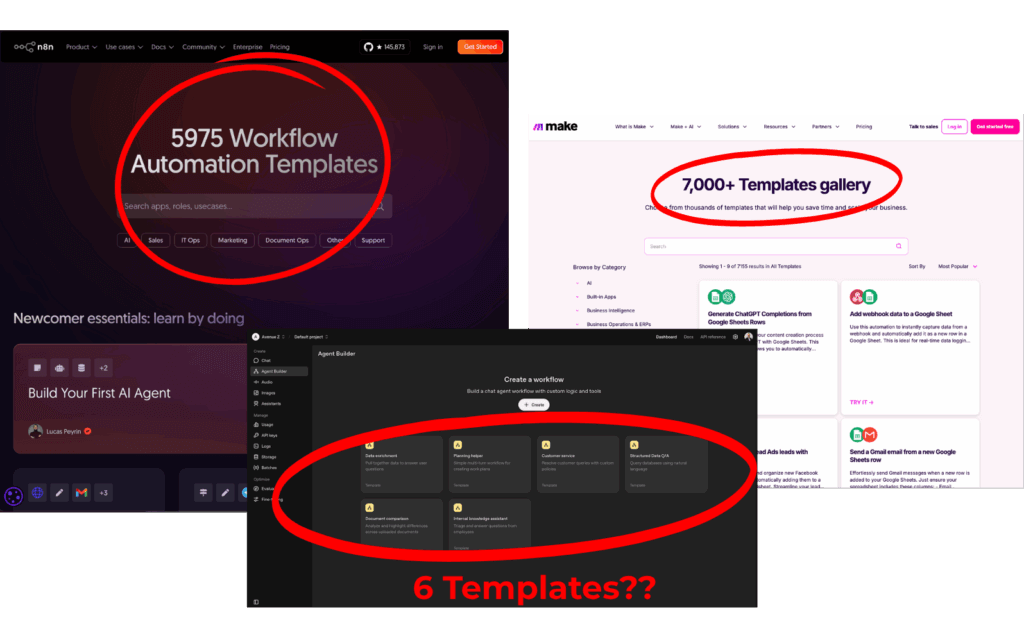
Final Thoughts
Agent Builder is not a n8n, Zapier or Make replacement. But that’s not the goal right now.
This release signals something bigger. OpenAI is moving beyond chat interfaces into full-stack development tools for AI-native applications. They are building toward a unified environment for creating, managing, and deploying intelligent systems across teams and tools.
If you are exploring how to add AI to your workflows, Agent Builder is worth testing. It brings the power of OpenAI’s models closer to your operations and makes collaboration across technical and non-technical teams much easier.
If you are managing complex automation, mission-critical systems, or require strict reliability, tools like Zapier, Make, and n8n still provide the maturity and control needed to scale.
Optimize Your Brand’s Visibility in AI Search
Millions turn to AI platforms daily to discover and decide. Make sure they find your brand.

